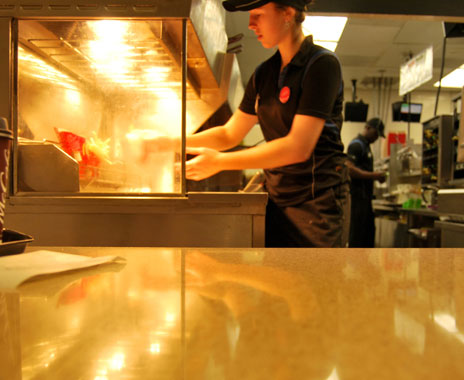The end of summer is around the corner. Restaurants are replacing summer help and adjusting staff as sales volume changes. With 30–50 percent of staff leaving, and staff requirements decreasing, the dramatic change in the team makeup can be jarring for managers and remaining staff.
But so much staff turnover is also a great opportunity to move the needle on quality and get a little bit closer to that ideal strong, productive, and engaged team that operators strive for. This is the perfect time to think about what a great employee base looks like. To assist, here are the three types of successful employees in the restaurant industry that all operators should have:
Type 1: The Perennial
Turnover at hourly jobs surpasses 100 percent each year. But in most jobs, 20–40 percent of the employee pool has been there for years. These are the Perennials. Perennials know the company like the back of their hand and are loyal to the brand.
Patrice works at a quick-service restaurant in Tennessee, and has been there for nine years. She has some of the best insights about how to recruit employees for her location. She is a master at training and sets a great tone for the crew. She likes the flexible schedule her seniority affords her and is proud of her job.
Perennial Financials: Employers save $1,500–$3,000 each year in reduced turnover for every Perennial on their staff. For a staff of 100, increasing the percentage of staff that is a Perennial from 20–30 percent means up to $30,000 in annual savings.
Perennial Benefits: Restaurants enjoy the synergy Perennials develop working together for so long. Perennials will become your eyes and ears on the ground, with valuable ideas about improving sales or better customer service.
Perennial Cons: It’s important to keep your Perennials happy. A complaining long-term employee is bad for staff morale.
Type 2: Movin’ on up
New employees with a knack for the job and the talent to move up to manager positions are like gold for employers.
Most employers report that their best managers started as frontline staff. It’s easier to train a manager who already knows the business than it is to train an outside hire.
Doreen is one great Movin’ on up employee. She started out as a Crew Member years ago. Within a decade, she was zipping around in a Mercedes Benz as a 10-location district manager. She recently supervised the launch of two new multi-million dollar units. She relates to her Crew in a way other managers can’t and she gets loyalty and great performance as a result.
Movin’ on up Financials: A great manager can take a store from under-performing by 20 percent to over-performing by 20 percent over a six month period: a 40 percentage point change in annual revenue.
Movin’ on up Benefits: These high performers have a deep understanding of all aspects of the business because they’ve been there. They are loyal to the employer that gave them their professional opportunity.
Movin’ on up Cons: Movin’ on up employees won’t stick around if they don’t see managerial openings. Business should only hire this type of employee if they are opening new locations frequently enough to regularly promote from within.
Type 3: The Sprinter
For employers who had great summer help, Sprinters are the employees they are getting ready to say goodbye to.
Sprinters are terrific employees who work for limited time, like between school semesters, saving up for something, or before heading into the military. They are industrious and learn quickly enough that even working for a few months is worthwhile.
Dan, a manager at a local quick-serve, talks about his favorite Sprinter this way: “The best employee I ever had worked for me for very little time. He comes back and says he only has 2 weeks to give, and I hire him immediately.”
Sprinter Financials: Sprinters can bring an extra $50 per day in sales due to better and quicker customer service. Over two months, one sprinter working four days a week can generate an extra $1,600 in revenue.
Sprinter Benefits: Sprinters are the perfect hire for seasonal work. They set a terrific example to the rest of the staff for work ethic and dedication.
Sprinter Cons: Sprinters do not stay long. It’s important to know ahead of time if an employee is going to be a short-term employee for turnover planning. Some times of year, they are more valuable than others.
The operational value of hiring the right type of worker at the right time can be tremendous. Once you learn the different types of your best employees, you’ll be able to build a high-performing crew that drives performance effortlessly.













